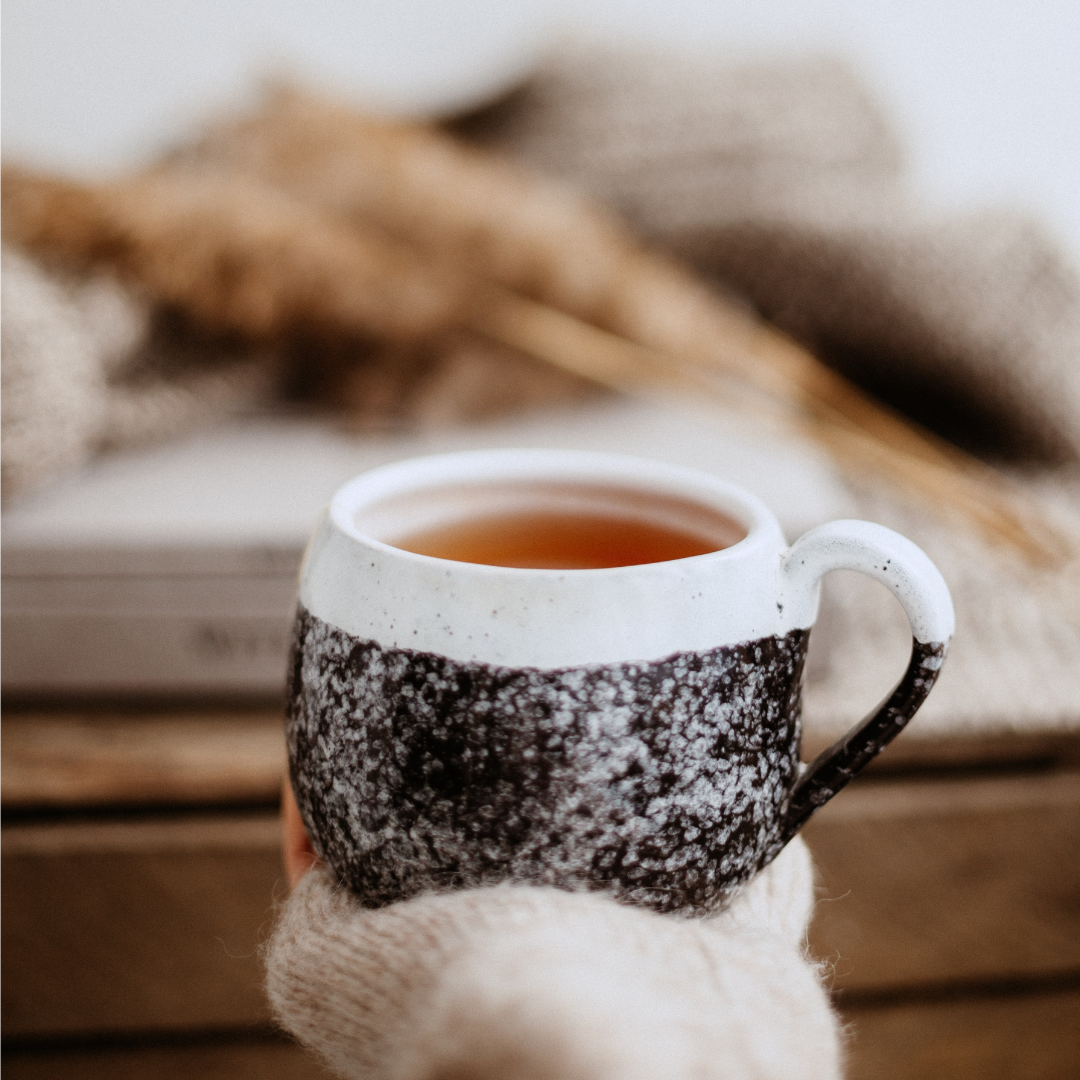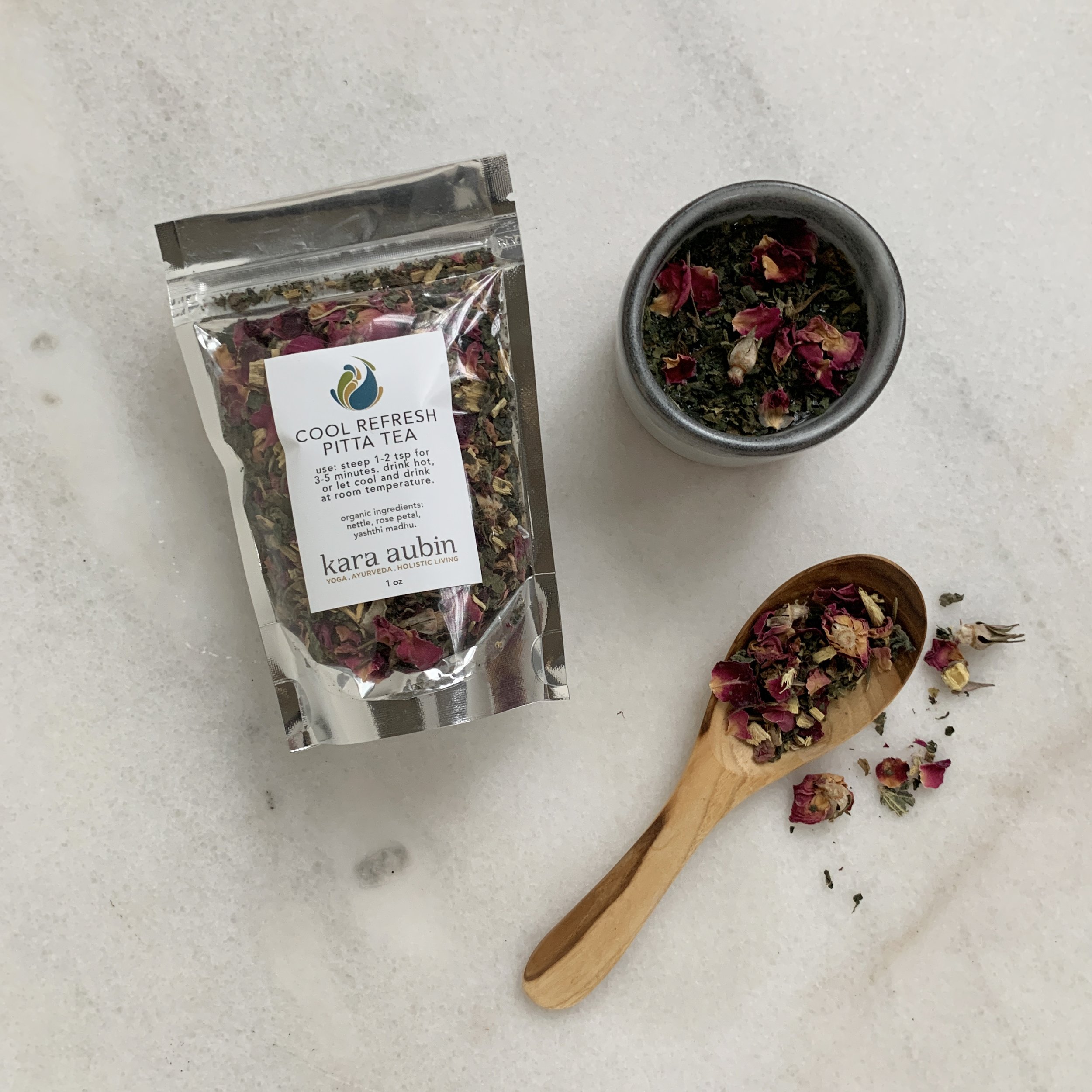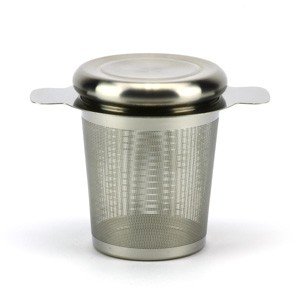tea brewing 101
tea time
The art of brewing tea is nuanced. While it can seem complicated deciding which tea to brew, how to go about the brewing process, and how much tea to use, I am here to show you that it doesn’t have to be that complicated. Through the lens of Āyurveda, brewing your favorite cup of tea is a simple and easy process, if you consider only a few questions.
what’s the purpose of this cup?
Āyurveda views tea as medicine. The steeping of various herbs and spices in hot water is a great way to extract the medicine of plants and create an enjoyable drinking experience; one where you feel nourished, comforted, maybe even joyful.
Considering the medicinal aspect of tea may help guide your decision on which tea to select. Are you a Pitta that needs to be cooled and softened? Are you a cold and clammy Kapha that needs a kickstart? Perhaps you are predominately Vata, and need some warming and calming.
Desired outcome can be facilitated by selecting the right herbal blend to brew. Our selection of herbs and spices are custom formulated for a specific purpose; we may even include certain herbs in tea blends that are not necessarily incorporated for taste, but rather, their medicinal quality. This is one of the main differences between a traditional herbal tea, and an Āyurvedic herbal tea.
does this tea contain caffeine?
A side-note on caffeine: All herbal teas are caffeine-free. Caffeine occurs naturally in the plant Camellia sinensis, of which the leaves are used to make tea. The five types of true teas (true tea being a tea that uses the plant Camellia sinensis) are green tea, black tea, white tea, oolong tea, and pu-erh tea. At the Āyurevedic Wellness Center all of our teas are herbal, with the exception of the Āyurvedic Chai, which contains fair-trade organic black tea from Assam, India.
how should I brew?
Once you know which herbal tea you would like to brew, next comes deciding upon brewing method. Again, considering purpose can help aid in the decision making. The key here is to maximize the healing potential of each beverage.
Your options for brewing are either by way of boiling, or by steeping.
Individuals working with pacifying Pitta, who would benefit from coolness and calmness, do not need excess heat. They could brew their doshic tea (Pitta Cool Refresh) and let it cool to room temperature for maximum effect. Since there are also delicate herbs in this blend, steeping rather than boiling is ideal. Consider steeping under the full moon! This is a lovely way to harness the cooling energy of the moon and infuse it into your cup.
Kapha and Vata could either boil or steep their teas (Kapha Bright Fire + Vata Root Down), as these teas contain heartier herbs. Drinking warm or hot is preferred for these doshas.
what are my brewing method options?
Now that you’ve determined how you will brew your tea, here is a quick and easy walkthrough of each method for our herbal teas. If you would like a walkthrough on making our Āyurvedic Chai, visit the blog here.
Boil: Add 2-4 tsp of tea to a pot of boiling water. 10-12oz will do; you will lose some water to evaporation during the boil. After 10-15 minutes, strain into your favorite mug. This is a great method for those herbal teas that contain thicker, denser plant material. Longer boils = a more robust taste and herbal effect.
Steep: Add 2-4 tsp to a tea infuser and place in a mug. Pour boiling water over the leaves and let steep for 5-10 minutes. Remove tea infuser and enjoy.
It’s also important to consider water quality, and brewing apparatus when preparing your tea. To achieve best results, it’s ideal to use clean, filtered water (we like reverse osmosis). High quality water (which ideally contains trace minerals, and is absent of contamination) will help to create a flavorful cup.
When considering brewing equipment, we like to boil our tea in a sauce pan, to give the tea leaves and herbs plenty of room to open up and release their flavor. Likewise, when steeping, we prefer a larger brew basket (what we call a tea infuser) for the same reason.
what are my tea options?
Below you will find a list of our teas and tea supplies; doshic appropriate teas, teas for sleep, calming the mind, as well as our Chai, both herbal and caffeinated.
root down vata tea
root down tea is formulated to counter the light, dry, airy qualities of Vata Dosha. when you need to feel grounded, present, and steady of mind brew a daily cup of root down. this blend contains Āyurvedic herbs that support the nervous system, strength of digestion, and the adrenals.
cool refresh pitta tea
when Pitta gets overheated and cranky, Cool Refresh is a lovely support. cooling, blood nourishing, and a little sweet - this blend makes a Pitta pacifying and delicious cup.
bright fire kapha tea
bright fire tea is a warming antidote to slow, sluggish Kapha-type digestive fire. a cup of this tea 20-30 minutes before a meal supports strong digestion, and lessens the physical accumulations Kapha brings.
ayurvedic chai
if there’s something we love, it’s definitely our chai. our days are just better with a spicy, sweet, nourishing ritual in a cup. this organic, fair-trade assam black tea + herbal blend is a balanced pick-me-up, and one that is gentle enough for sensitive doshas.
ayur-herbal chai
this caffeine-free herbal blend is supportive for those of us with more sensitive nervous systems or for those times of day when we don’t need any additional stimulation.
deep zzzs
for those times when you need support falling or staying asleep, this herbal blend is an effective way to wind down and prepare for rest.
drink a cup 20-30 minutes before bed and enjoy some Deep Zzzs.
tea infuser
brew your loose leaf tea with ease. this fine mesh cylinder shaped stainless steel strainer creates an effective and robust brew by giving your tea space to move.
can be used to make a single cup of tea or a teapot. the side handles make it easy to remove the strainer from the cup. convenient lid doubles as a resting tray for the strainer.
“If you can serve a cup of tea properly, you can do anything.”
related posts
loved what you learned? feeling inspired? share this article with someone who would benefit!
you can also share via the social icons below.



















